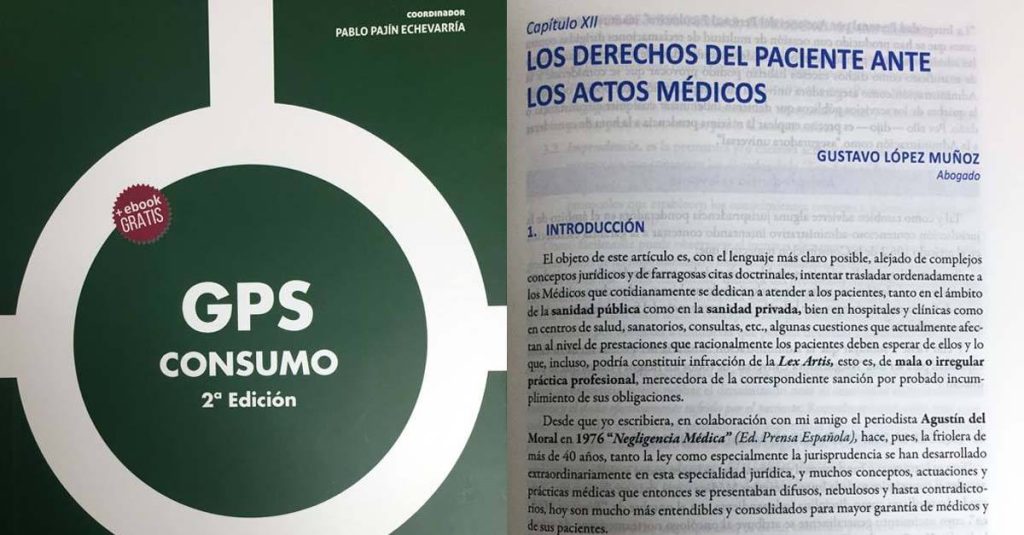Risk of brand confusion

The registration of “Spanish brand” in the Spanish Patent and Trademark Office, or “community trademark” in the OHIM, grants the owner the right of exclusive use.
By virtue of this right, you may prevent third-party competitors with the same product or service from using the signs or trademarks that have been registered. In the event that a conflict arises between two registered trademarks, the previously requested trademark shall have priority right.
In cases where there is identity between signs, it will not be necessary to carry out a study on the risk of confusion between both marks. Our regulations on trademarks prohibit the coexistence of the allegedly infringing sign with the registered trademark, and therefore the owner of the trademark may demand the cessation of its use.
In cases of mere similarity of signs and/or similarity of products or services, it will be necessary to analyze whether there is a risk of confusion between the disputed signs. As established in art. 9.2 b) of the Community Trademark Regulation for community trademarks and art. 6.1 b) of the Trademark Law for Spanish trademarks.
What is the likelihood of trademark confusion?
We all have in mind signs that serve to identify both a specific product with its own characteristics and its manufacturer. It constitutes a risk of confusion, the risk that the public believes that the products or services in question come from the same company or, where appropriate, from economically linked companies.
This was literally explained in the judgment of the Court of First Instance of July 3, 2003 in the Budmen case T-129/01 (ap. 37 ), which also cited other precedents such as judgments of the Court of Justice of September 29, 1998, Canon, C-39/97, ECR p. I-5507, paragraph 29, and of June 22, 1999, Lloyd Schuhfabrik Meyer, C-342/97, ECR p. I-3819, paragraph 17; Judgment of the Court of First Instance of October 23, 2002, Oberhauser v OHIM – Petit Liberto (Fifties), T-104/01, ECR p. II-4359, section 25.
The judgment of the Court of Justice of September 29, 1998 in the Canon case, C-39/97 (ap. 29) introduced a nuance in this regard, since it pointed out that in order to eliminate the risk of confusion, the absence of a risk of confusion regarding the place of production of the products or services considered was not enough.
Using a label that could lead consumers to think that the product comes from a well-known manufacturer with recognition in the market, would constitute a risk of confusion, or even a risk of association, for associate the product in question to a specific producer.
The truth is that the risk of association is implicit in the risk of confusion itself. This is what is textually proclaimed in art. 8.1 b) of the Community Trademark Regulations and it is also included in our Trademark Law in its art. 6.1 b) when regulating the grounds for refusal of relative trademarks. This was stated in the judgment of the Court of Justice of June 22, 1999, Lloyd Shuhfabrik Meyer case (ap. 17):
“According to the very terms of letter b) of paragraph 1 of article 5 of the Directive, the concept of association risk is not an alternative to the concept of risk of confusion, but serves to specify its scope (see, in this regard, the SABEL judgment, cited above, paragraphs 18 and 19)”.
The proscription of the risk of confusion between distinctive signs derives from the need to preserve or guarantee the essential function of the trademark of identifying the business origin of the products or services identified with it by referred to in section (8) of the Preamble of the Community Trademark Regulation to which we referred before.
This identity of business origin involves another function of the brand, which is to transmit to the consumer the guarantee that all the products or services identified with a brand have been manufactured or provided under the control of the company that owns the brand and allow us to venture a uniformity in their quality. Community jurisprudence has referred to all this, among others, in the following precedents:
- Judgment of the TJCCEE dated June 18, 2002 Case Koninklijke Philips Electronics NV (ap. 30):
“It also follows from the jurisprudence of the Court of Justice that the essential function of the trademark is to guarantee to the consumer or end user the identity of origin of the product or service that it is designated with it, allowing it to distinguish said product or service from those of another origin without possible confusion, and that, in order for the trademark to be able to perform its function as an essential element of the undistorted competition system that the Treaty seeks to establish, it must constitute the guarantee that all the products or services designated with it have been manufactured or provided under the control of a single company, which can be held responsible for their quality (see, in particular, the judgments of 11 of November 1997 [CJEC 1997, 233] , Loendersloot, C-349/95, ECR I-6227, paragraphs 22 and 24, and of 29 of September 1998 [CJEC 1998, 220] , Canon, C-39/97, ECR I-5507, paragraph 28)”.
- Court of justice of the CCEE case ALCON INC against BIOFARMA SA and others. Judgment of April 26, 2007 (ap. 53):
“According to jurisprudence, the essential function of the trademark is to guarantee to the consumer or end user the identity of origin of the product or service designated by the trademark, allowing them to distinguish without possible confusion that product or that service from those that have another origin (see, in particular, the judgments of June 18, 2002 [TJCE 2002, 198] , Philips, C-299/99, ECR I-5475, paragraph 30, and of September 15, 2005 [CJEC 2005, 272], BioID/OHIM , C-37/03 P, ECR I-7975, paragraph 27)”.
Trademark regulations try to prevent the risk of confusion between distinctive signs by denying access to the Registry to those who incur in such confusion with other priority distinctive signs (art. 8.1 Regulation of Community Trademark and article 6 of the Trademark Law). Those same rules that regulate the granting of trademarks, as well as the jurisprudential doctrine that interprets them, must govern the comparative analysis to determine if the exclusive right of a community trademark holder is violated.
How do we measure the risk of brand confusion?
This risk of confusion is the result of the confluence of several elements on which identity or similarity may fall. The main parameters that we must consider when comparing two distinctive signs to assess the risk of confusion with each other are the following:
- Name identity or similarity.
- Identity or graphic similarity.
- Identity or visual similarity.
- Phonetic identity or similarity.
- Identity or conceptual similarity.
- Identity or graphic similarity of the products or services to which the trademark in question is applied.
This was stated in the judgment of the Court of Justice in the case of Alcon Inc against Biofarma SA and others dated April 26, 2007 (ap. 29):
“Therefore, the Court of First Instance considered, in sections 75, 76 and 80 of the aforementioned < em>judgment (TJCE 2005, 281), that, given the considerable similarity of the products in question, as well as the visual and phonetic similarity of the conflicting signs, there was a risk of confusion between said signs to the extent that the public could believe that the products in question came from the same company or, as the case may be, from economically linked companies…”
Despite the convenience of the comparative study of the previously exposed elements individually, we must obtain a conclusion about the risk of confusion after considering all of them globally. Courts require that all factors involved in each comparative study be taken into account.
This has been repeated by Community jurisprudence:
- Sentence of the Court of Justice of November 11, 1997 C-251/95, case Sabel (ap. 22):
“the assessment of the likelihood of confusion «depends on numerous factors and, in particular, on the knowledge of the mark on the market, on the association that can be made of it with the sign used or applied for [read registered»], the degree of similarity between the mark and the sign and between the designated products or services». The risk of confusion must, therefore, be assessed globally, taking into account all the factors of the specific case that are relevant.
- Judgment of the Court of Justice of June 22, 1999, case Lloyd Shuhfabrik Meyer (ap. 18):
“According to this same jurisprudence, the existence of a likelihood of confusion for the public must be assessed globally, taking into account all the factors of the specific case that are relevant ( see, in this regard, the SABEL judgment, cited above, paragraph 22).
- Sentence of the Court of Justice in the Canon Case of September 29, 1998 (ap. 16):
“Secondly, it should be noted that, according to the case law of the Court of Justice, the risk of confusion on the part of the public, to which the application of the letter b) of paragraph 1 of article 4 of the Directive, must be assessed globally, taking into account all the factors of the specific case that are relevant.”< /p>
The Community Trademark Courts have echoed this doctrine, and in the same sense the judgment of the Community Trademark Court No. 2 of April 4, 2008 was pronounced.< /p>
On the other hand, in order to estimate that there is a likelihood of confusion, the distinctive character of the earlier mark must be considered. The more distinctive character the allegedly infringed mark has, the greater the likelihood of confusion. This was stated in the judgment of the Court of Justice in the Canon Kabushiki Kaisha v. Goldwyn-Mayer Inc Case of September 29, 1998 (ap. 18):
“Furthermore, according to the case-law of the Court of Justice, the likelihood of confusion is all the higher the greater the distinctive character of the earlier mark. Thus, since the protection of a registered trademark depends, according to Article 4(1)(b) of the Directive, on the existence of a likelihood of confusion, Those trademarks that have a highly distinctive character, either intrinsically, or thanks to how well-known they are in the market, enjoy greater protection than trademarks whose distinctive character is less…”
Concept of average consumer
To determine the real existence of a risk of confusion, the courts tell us that we must attend to the criterion of the so-called “average consumer”. Given the diversity between some consumers and others, jurisprudence has given a definition of “average consumer” as that consumer who is normally informed and reasonably attentive and insightful [judgment of the Court of Justice of the European Communities of July 16, 1998 C-210 /96 and judgment of the Court of First Instance of December 12, 2002, case Hubert T-110/01, app. 39 and June 22, 1999, matter Lloyd Shuhfabrik Meyer, app. 26].
Thus, the comparison of two brands or logos must be made in the eyes of the average consumer. Although the peculiarities of the average consumer may be considered depending on the type of product or service in question.
Special attention to the territory
Community jurisprudence has also insisted that such a risk of confusion must be assessed in relation to the consuming public in the territory in which the priority trademark is protected.
The judgment of the Court of Justice in the case of Alcion Inc against Biofarma SA and others dated April 26, 2007 (ap. 51) said:
“According to article 8, paragraph 1, letter b), of Regulation no. 40/94 , the existence of a likelihood of confusion resulting from the similarity, on the one hand, between the mark whose registration is requested and an earlier mark and, on the other, between the products or services that said trademarks designate must be appreciated in relation to the public in the territory in which the earlier trademark is protected”.
Conclusions
- Trademark infringement due to similarity requires an assessment of the likelihood of confusion, defined as the predictability judgment that the consumer may mistake one product for another due to the similarity between brands.< /li>
- The assessment of the risk of confusion requires the comparison of graphic and phonetic elements, considered globally by the average consumer.
- The likelihood of confusion will be higher if the trademark allegedly infringed has high distinctive value, or is a well-known trademark.
- The risk of confusion must attend to the specific case, assessing the particular circumstances of each case, and unique aspects such as the sector in question or the consumer public in the territory in which that the priority brand is protected.
José Luis Casajuana Ortiz
Partner at J. L. Casajuana and head of the international area< /strong>
12/21/2016



















